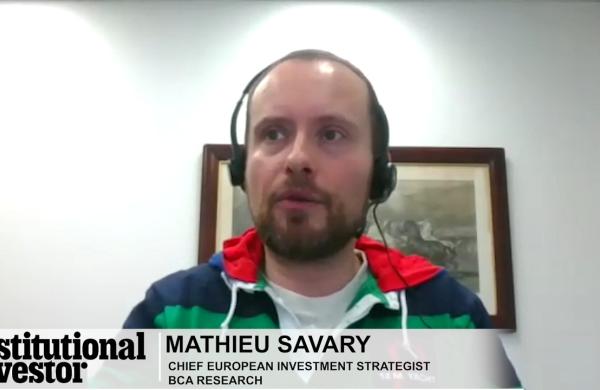Jürgen Dormann knows that stockholders vote with their feet. While chairman of German chemicals giant Hoechst from 1994 to 1999, he was initially hailed as a staunch defender of European shareholder value. Through spin-offs and acquisitions, Dormann successfully focused the conglomerate on agriculture and drugs ("life sciences" in the lingo), and the company's shares rose 133 percent between 1994 and 1997. But during the following three years, as Hoechst struggled to build up a drug pipeline and was slow to seek a merger partner, Dormann found himself more often pilloried than praised. Hoechst's stock fell 14 percent during the period.
Then, last year, Dormann won applause for brokering the union between Hoechst and France's Rhône Poulenc to create Aventis. But from the beginning shares of the new pharmaceuticals and agricultural group, which had $25 billion in sales last year, have underperformed its peers'. As a multiple of core earnings, Aventis stock trades at an 11 percent discount to the European pharmaceuticals sector, according to Lehman Brothers.
That's a big improvement from six months ago, when Rhône Poulenc and Hoechst both traded at a 17.4 percent discount to the index. Yet despite a firstquarter jump in earnings and a rising stock price, Dormann is under increasing pressure to unload his low-margin agricultural business, as other life sciences companies have already jettisoned their own crop units.
In addition, some analysts worry that Aventis's drug pipeline may prove inadequate, especially given the recent megamerger between Glaxo Wellcome and SmithKline Beecham, and the one between Pfizer and Pharmacia. "Aventis has some new drugs, but one has to seriously question whether that is enough today," says Stewart Adkins, a pharmaceuticals analyst at Lehman Brothers in London.
Dormann, 60, argues that he can create further value with his agriculrural business, although he does not rule out the possibility of a future sale. He made his case to Institutional Investor Staff Writer David Lanchner at Aventis's new headquarters in Strasbourg, France.
Institutional Investor: How committed are you to the life sciences model?
Dormann: We remain committed to it, but not necessarily in the traditional way. "Life sciences" is a very loose phrase. Today, for us, "life sciences" means using basic research and development for two businesses—pharmaceuticals and crop protection. But that may not always be the case. Whether the biggest opportunities will be in combining drug development with crop sciences, or with vaccines, diagnostics or something else, will depend upon how biology and technology evolve.
Your shares are suffering. Would you consider following your rivals' example and spinning off Aventis's agricultural business?
Who knows? The agricultural business has been in a difficult phase for the past two years and may well be troubled next year, as well. But we have three or four products, specifically in the crop protection area, that are seeing sales grow far above market averages. For the next two to three years, we can considerably increase the profitability of Aventis Crop Sciences, even under the current difficult market conditions. That way, we can create value for the shareholder. That said, pharmaceuticals is our key strategic operation because it has the highest margins and thus the greatest potential for value creation.
Is there a specific event that would make you more likely to unload the agricultural business?
Right now we are waiting to see how the market reacts to the launch later this year of the first publicly quoted agricultural science companies. That should provide us with a clear view of how investors value the potential of a standalone agricultural sciences company.
What do you say to investors who are disappointed in your drug research pipeline?
Five years ago, when both Rhône Poulenc and Hoechst were hybrid chemical companies lacking a strong pharmaceutical focus, our research effort was disappointing. Today the research pipeline is anything but disappointing, and the recent rise in our stock price demonstrates that the perception of most investors is changing.
Tell us about your most promising recent and coming drug launches.
We have five new products which have 40-plus percent growth rates in terms of sales. One of those, the antiallergy drug Allegra, could see sales reach $1 billion this year. Ketek, an antibiotic for respiratory tract infections, is scheduled for launch next year and could also see $1 billion in annual sales. Actonel, the osteoporosis drug we are co-marketing with Procter & Gamble, recently received U.S. and European Union approval and should also garner $1 billion in annual sales, split evenly between Procter & Gamble and us. Altogether, Aventis will bring 13 new drugs to market by 2004. By then, high-margin, patent-protected drug sales will account for 60 percent of total prescription sales, as opposed to 32 percent today.
What was the main impetus behind the Hoechst-Rhône Poulenc merger? Was replenishing your pipelines a priority?
Both companies had relatively strong pipelines. Of our five new drugs, two came from Hoechst, two from Rhône Poulenc, and one was jointly licensed. The real reason we merged was to achieve critical mass for the future. Annual research costs to bring a drug to market have increased 286 percent over the past ten years. The costs we eliminate with the merger allow us to develop new drugs and at the same time achieve an average annual increase in our profits of 15 percent a year.
What else are you doing to cut costs? Does the Internet play a part?
It will alter both procurement of materials and our distribution of products, but it is still too early to say exactly how. Although it is not talked about much, research is one area where [the Internet] has great potential to cut costs.
How important is bolstering sales in the U.S. to increasing your margins?
The U.S. is the world's most lucrative market. Today 28 percent of our pharmaceutical revenues are made in the U.S., and we will boost that to 40 percent in the next two to three years. Most of the sales growth of the five new drugs I mentioned earlier is coming from the U.S., and our sales force there has increased from 800 people five years ago to 4,000 today.
After merging with competitors earlier this year, industry leaders Glaxo SmithKline and Pfizer now have revenues that are respectively 50 percent and 69 percent larger than those of Aventis. Are you contemplating a merger to help close the gap?
No. With the costs we are taking out and with our rising number of drugs, we will have significant organic growth. The companies you mentioned merged because they did not have the right size to cope with investments in marketing, distribution and technology. That is a problem we don't have.Moreover, throughout the pharmaceuticals industry, I would look much more at which drug and biotechnology companies are likely to cooperate through joint development and co-marketing rather than through mergers. Partnerships, especially between drug and biotech companies, will be increasingly important for enriching drug portfolios, reducing costs and even extending parent protection.
How difficult has it been to merge two companies that had their headquarters in different countries?
Not as tough as you might think.





